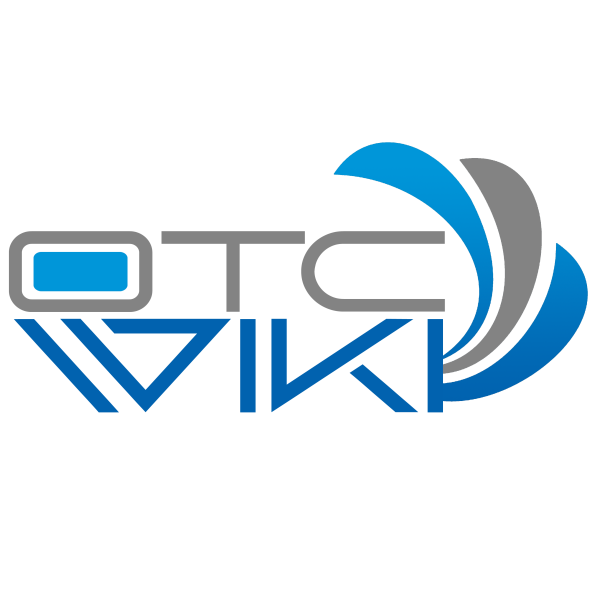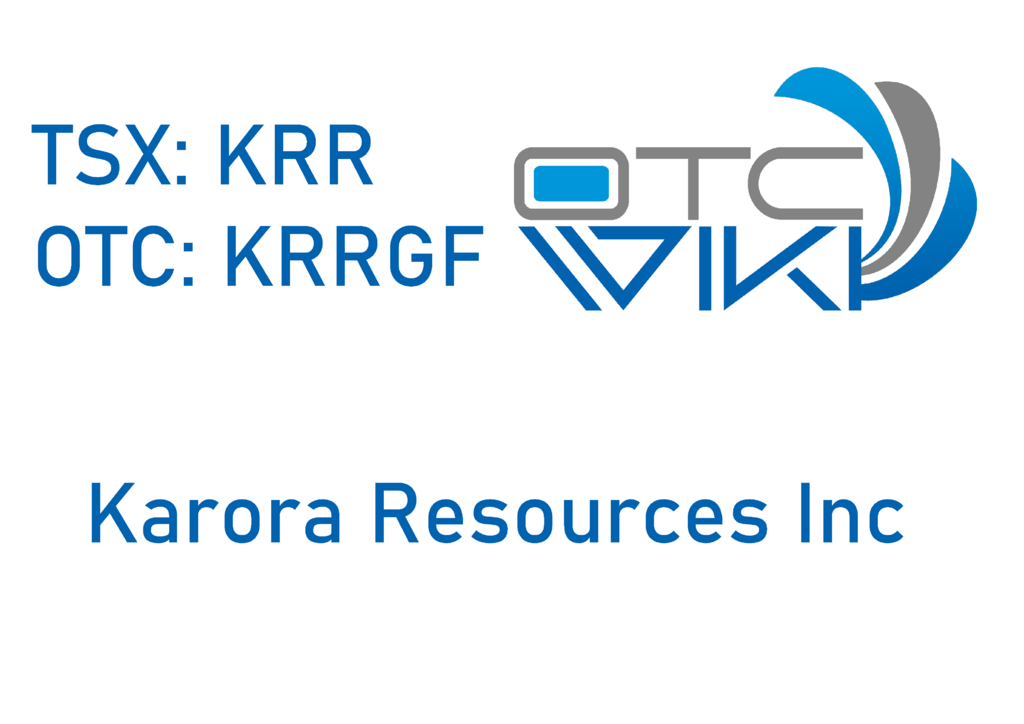Karora Resources Inc - KRRGF stock
Note: Karora Resources is a privately held company and no longer trades on the OTC Market.
Introduction
Karora Resources Inc (TSX: KRR, OTC: KRRGF) is a Canada-based multi-asset mineral resource company. It was incorporated in 2006 and is headquartered in Toronto. The company was originally known as Royal Nickel Corporation before it changed its name to Karora Resources Inc. in June 2020.[1] In August, 2024, all of the outstanding shares of Karora were purchased by Westgold Resources as the result of a merger agreement between the two companies.[2]
Karora primarily focuses on the exploration, evaluation, acquisition, and development of precious metal properties. Karora’s portfolio of owned and operated plants include Higginsville Gold Operations (HGO), Beta Hunt Mine (Beta Hunt), and Spargos Reward Gold Project (Spargos). Beta Hunt is a major gold-producing underground operation with nickel by-product credits in Western Australia. HGO has a mineral gold resource and reserve. The operation entails a 1.6 million tons per annum (Mtpa) processing plant, approximately 192 mining tenements including the Baloo, Pioneer, Fairplay North, Mitchell, Wills, Challenge, and Mount Henry deposits.[3]
Operations
Beta Hunt Mine
The Beta Hunt Mine, located in Kambalda, Western Australia, is an underground mine that has a unique characteristic of containing both gold and nickel resources in separate but adjacent mineralized zones. The mining tenements for the Beta Hunt Mine are held by Gold Fields Limited, but Karora Resources operates the mine through a sub-lease agreement with Gold Fields Limited. The Kambalda mining district has a long-established history as a significant mining center, offering excellent infrastructure, a skilled local workforce, and nearby processing mills for nickel and gold.[4]
Originally developed and operated by Western Mining Corporation (WMC) in the 1970s, the Beta Hunt Mine was later sold to Gold Fields in 2001. In 2003, Reliance Mining Limited (RML) acquired the nickel rights and resumed production. Consolidated Minerals Limited purchased RML in 2005 and invested in expanding resources and production. However, due to the financial crisis and the subsequent decline in metal prices, the mine was put on care and maintenance at the end of 2008.[4]
During the period from 2001 to 2003, the nickel rights were separated from the gold rights through various transactions. Salt Lake Mining acquired the property in 2013 and successfully reunited the nickel and gold rights. Nickel operations were restarted in 2014, followed by initial gold production from June to July 2014, a temporary pause, and then recommencement at the end of 2015. The mine has been in continuous operation since then. Karora Resources acquired Salt Lake Mining (SLM) in 2016 under its previous name, RNC Minerals.[4]
Currently, the main areas of gold production at Beta Hunt are the Western Flanks and A Zone. The mine has significant exploration potential, allowing for the expansion of Mineral Resources alongside production. Several gold zones, including Western Flanks, A Zone, Larkin, East Alpha, and Fletcher, offer substantial opportunities for cost-effective gold resource expansion due to their proximity to existing mine infrastructure. Additionally, new nickel zone discoveries such as 50C Nickel Trough in the Gamma Block and 30C Nickel Trough in the Beta Block present ongoing potential for expanding the nickel Mineral Resources and increasing by-product credits.[4]
Beta Hunt is situated within the Norseman-Wiluna greenstone belt, specifically in a sequence of mafic/ultramafic and felsic rocks on the southwest flank of the Kambalda Dome. Gold mineralization primarily occurs in subvertical shear zones within the Lunnon Basalt and is characterized by quartz veining resulting from shear and extension, surrounded by biotite/pyrite alteration. Coarse gold occasionally occurs at the intersections of the shear zones with iron-rich sulphidic metasediments in the Lunnon Basalt or nickel sulphides at the base of the Kambalda Komatiite (ultramafics). Nickel mineralization is mainly hosted by talc-carbonate and serpentine-altered ultramafic rocks (Kambalda Komatiite) that overlie the Lunnon Basalt. The primary sulphide minerals typically found are pyrrhotite, pentlandite, pyrite, and trace amounts of chalcopyrite.[4]
Higginsville
Located approximately 75km south of the Beta Hunt Mine in Higginsville, Western Australia, the Higginsville Gold Operations ("HGO") have been owned and operated by Karora Resources since June 10, 2019. Karora Resources purchased HGO on June 10th, 2019 from Westgold Resources Limited. Situated in the highly abundant Kalgoorlie Terrane of Archean ages, the site can be found between the gold prospecting towns of Norseman and Saint Ives. The stratigraphy trends northward and is composed of gabbro-ultramafic-basalt sequences and sedimentary deposits to either side. These units have been subject to east-west thrust faulting; shearing and Faulted contacts being a common occurrence.[5]
Avoca Resources Limited (Avoca) acquired Higginsville exploration assets from Gold Fields in June 2004. In pursuit of this, the firm raised A$125 million to set up a processing plant that was projected to have a 1.6 Mtpa capacity. This resulted in the inception of mining operations at Trident, which was previously the biggest deposit at HGO, in 2007. Later on, Avoca purchased Chalice deposit from Chalice Gold Mines Limited and gold production began in 2008 with the first gold pour carried out on July 1 of the same year. The 192 tenements within the operation include Aquarius, Hidden Secret, Mousehollow, Two Boys, Baloo, Pioneer, Fairplay North, Mitchell, Wills and Mount Henry deposits.[5]
After merging with Avoca Resources Limited (Avoca) in 2011, Alacer Gold Corporation, a wholly owned subsidiary of Alacer Gold, acquired HGO. In October 2013, Alacer Gold Corporations completed the sale of its Australian Business Unit, which included HGO and its assets, to Westgold Resources Pty Ltd, a wholly owned subsidiary of Metals X Ltd. Panoramic Resources Ltd and Matsa Resources Limited sold the Mt Henry Gold Project to Metals X in July 2015. Avoca remained a subsidiary of Westgold Resources Limited following the demerger from Metals X Ltd.[5]
Most of the gold mineralization along the Trident line-of-lode is located within the Poseidon Gabbro and high MgO dyke complexes. It is predominantly structured and lithologically controlled, often found in association with quartz veining. The Higginsville area is particularly abundant in placer gold, which normally lies near the bottom of the channel-fill sequences, as well as oxidized gold deposits in sediments from these channels and the surrounding saprolite. Primary mineralized zones within Archaean bedrock are typically close by.[5]
Lakewood Mill
In July 2022, Karora Resources acquired the Lakewood Gold Mill. This mill is situated just outside Kalgoorlie, Western Australia, and is located approximately 60 kilometers away from the Beta Hunt Mine. It has a processing capacity of 1.0 million tonnes per annum (Mtpa). Prior to acquiring Lakewood, Karora had conducted two toll milling campaigns of Beta Hunt material, achieving a remarkable 94% gold recovery rate. With the addition of the Lakewood mill, Karora's nominal processing capacity increased to around 2.6 Mtpa. This capacity is distributed between 1.6 Mtpa at the Higginsville mill and 1.0 Mtpa at the Lakewood mill. This acquisition is a significant step in reducing the risks associated with Karora's growth plan, which aims to increase gold production to a range of 170,000 to 195,000 ounces by 2024.
Mergers and Acquisitions
Spargos Reward Gold Project
Karora Resources completed the acquisition of the Spargos Reward Gold Project from Corona Resources Limited in August, 2020. Following a thorough due diligence process, Karora finalized the purchase of the Spargos Reward Project for A$4 million in cash. The agreement also includes a commitment from Karora to spend at least A$2.5 million on exploration and development over the next two years.[6]
The Spargos Gold Project holds a historical JORC1 (2012) Mineral Resource Estimate, indicating 112,000 ounces of gold (785,800 tonnes at a grade of 4.4 g/t), as well as an inferred resource of 19,000 ounces of gold (151,000 tonnes at a grade of 4.0 g/t), as outlined in Table 1 below. As part of the agreement, the seller will receive A$1.5 million worth of Karora shares upon the commencement of gold production from Spargos. Additionally, if a new indicated gold resource of at least 165,000 ounces is discovered at the project, the seller will be entitled to A$1.0 million worth of Karora shares.[6]
The Spargos Reward project encompasses 33 km2 of land in the Eastern Goldfields of Western Australia, conveniently located only 35 minutes away from HGO by road. In addition to the existing historical resource, the project area includes several historic workings, with the most notable being the Spargos Reward Gold Mine. This mine operated in the 1930s and 1940s, producing 105,397 tonnes of gold at an average grade of 8.56 g/t Au. Since then, gold extraction has been limited.[6]
Westgold Resources
In Arpil, 2024, Karora agreed to a merger with Westgold Resources, with Westgold set to acquire 100% of Karora's shares.[7] The merger was completed in August, 2024. [2]
Ramelius
Speculation about merger talks with Ramelius was confirmed in a press release dated March 7, 2024. Karora confirmed engaging in confidential exclusive discussions with Ramelius about a potential business combination.[8] An update later in the month stated that discussions had ceased.[9]
Financial Performance
Financial performance for Karora Resources Inc.[10]
| Year Ending | Total Revenue | Net Income | Cash Balance |
|---|---|---|---|
| 12/31/2022 | $233,988,000 | $7,307,000 | $50,766,000 |
| 12/31/2021 | $209,149,000 | $21,745,000 | $72,046,000 |
| 12/31/2020 | $187,705,000 | $69,176,000 | $62,555,000 |
| 12/31/2019 | $98,736,000 | ($5,353,000) | $26,725,000 |
- ↑ Yahoo Finance. KRRGF Stock Profile. Retrieved on 7/2/2023.
- ↑ 2.0 2.1 newswire.ca. WESTGOLD AND KARORA COMPLETE MERGER. August 1, 2024.
- ↑ Reuters. KRR.TO Stock. Retrieved on 7/2/2023.
- ↑ 4.0 4.1 4.2 4.3 4.4 Karoraresources.com. Beta Hunt Mine. Retrieved on 7/2/2023.
- ↑ 5.0 5.1 5.2 5.3 Karoraresources.com. Higginsville Mining. Retreived on 7/2/2023.
- ↑ 6.0 6.1 6.2 Business Insider. Karora Resources Completes Acquisition of Spargos Reward High-Grade Gold Project. August 7, 2020.
- ↑ Westgold Resources. Westgold Karora Merger Information. Retrieved on 11/6/2024. Archive link.
- ↑ newswire.ca. Karora Resources Responds to Media Speculation. March 7.
- ↑ The Globe and Mail. Karora Resources Provides Update on Exclusive Discussions. March 27, 2024.
- ↑ OTC Markets. Karora Resources KRRGF Stock Financials. Retrieved on 7/2/2023.
OTC Symbol: KRRGF | OTC Tier: OTCQX International

